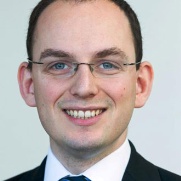Debate: Will restricting hospital training places encourage more medical students to become GPs?


YES
Last month, Health Education England published its report, Securing the Future GP Workforce: Delivering the Mandate on GP Expansion, that it been holding since March. It neatly summarises the shocking state of UK general practice at the moment. There are now fewer GPs per head population than five years ago and not enough GPs are being trained. Increasing numbers of GPs are working part-time (both men and women) and there is an exodus of retiring GPs.
The most controversial recommendation in the HEE report is to remove 2,025 hospital training posts to create 450 more general practice posts – and I agree this must be done.
One popular solution proposed by others is to look for alternative models of care instead. I agree with the report’s authors that there is a crisis now in the workforce. We can’t fulfil the current demand for GPs so this requires immediate action. We cannot afford to wait until new models of care are developed, piloted and implemented.
We don’t even need to increase the total number of medical students. A report in 2011 showed that, if current training rates continue, there would be an oversupply of consultants and an undersupply of GPs.
In short, without removing training places from hospital specialties we will see medical unemployment in secondary care.
But would the recommendation to remove hospital training posts work in practice? Would ‘wannabe surgeons’ change their minds and become GPs?
In Northern and Mersey deaneries there were 10 posts for every 11 applicants to GP specialty training. Now 20-30% of applicants to general practice have it as their sole top choice. General practice is the most popular second choice for those applying to other specialties. If the likelihood of getting a job in cardiothoracic surgery is reduced, suddenly their ‘back-up choice’ becomes important. It will force medical students to closely examine a career in general practice.
It wouldn’t take a lot to show applicants to other, more competitive, specialties (such as the acute common care stem) that general practice shares the same attributes. I don’t believe we risk having a population of disgruntled ‘failed’ surgeons filling up the GP workforce.
In any crisis, strong leadership is required and bold actions must be taken. And during the current crisis in the GP workforce, we must not be afraid to remove the excess hospital training places.
If we don’t, we will be cosigning the next generation of secondary care doctors to the risk of medical unemployment whilst those in primary care continue to be overwhelmed by an impossible workload.
Dr Phil Williams is a GP in Lincoln is the RCGP’s national lead for First5.

NO
Health Education England expressed surprise earlier this year at a vacancy rate in GP specialty training programmes of up to 40% in some parts of the country, which forced them to run an unprecedented third round of recruitment. Junior doctors aren’t stupid, quite the contrary. They read the papers, and they witness the pressure cooler environment first hand in their training placements – daily fire-fighting and frazzled tutors. They see colleagues emigrate or forced into early retirement due to burnout. They see practices in financial ruin and a continued disinvestment compounded by an inexorable rise in complexity and quantity of workload. No wonder they think, ‘No thanks’.
It has taken years of reduced investment for GP morale to hit rock bottom – but that’s where we are now. Ten years ago, the nGMS contract led to thousands of trainees actively choosing general practice – I was one of them. GPs were a contented lot and that shone through in every teaching or training placement.
But it will take years to turn this around again. The proposal for GP training to take junior doctors who don’t want to be GPs, and to place them in surgeries where GPs don’t want to be trainers, is optimistic to say the least. Presumably, this will push even more junior doctors away from the profession.
To suggest taking funding away from fallow GP specialty training programmes and use it to fund yet more hospital placements for failed GP applicants is simply madness. Why not ring-fence the funding to get returners back into practice? They’ll be back in their surgeries seeing patients quicker than it will take a F2 embarking on ST1 to qualify, and at a fraction of the cost. The political will is there to make this happen.
It’s not so long since the MTAS wrecked careers that were in full bloom. At least this policy proposal is looking to nip them in the bud. By all means, temper career expectations and streamline training programmes to meet society’s demands, but this is not the sort of moulding that responds to a blunt instrument. If you want the child to swallow the medicine, you’d better make it taste nice.
Today’s prospective trainees have eye-watering student loans to pay off and will receive an NHS pension no better than others on the high street. They will need a serious set of incentives to come on board. Address the chronic lack of investment, the rock bottom morale, the workload imbalance. Give GPs back their autonomy and increase our funding to a 12% slice of the NHS pie – that will improve recruitment.
But don’t restrict hospital training places in the vain hope it will make everyone want to be a GP. You’d be better off rearranging the deck-chairs on RMS Titanic.
Dr Katie Bramall-Stainer is a GP in Hertford and a member of the GPC.
Pulse October survey
Take our July 2025 survey to potentially win £1.000 worth of tokens












